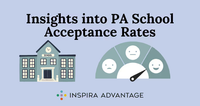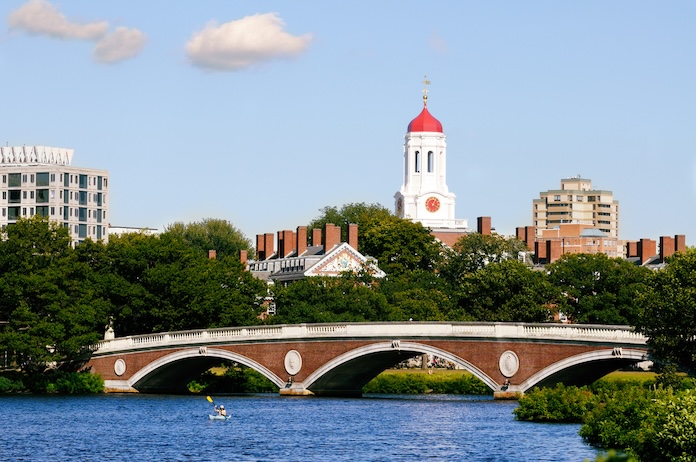Durchsuchen Sie die Webergebnisse zu dieser Domain.

Data on acceptance rates are readily available for most colleges, but our guide’s exclusive analysis shows admissions stats for each California high school. College counselors say this data can be critical to gauging your chances because schools compare you to other applicants from your high ...
Data on acceptance rates are readily available for most colleges, but our guide’s exclusive analysis shows admissions stats for each California high school. College counselors say this data can be critical to gauging your chances because schools compare you to other applicants from your high school, both from the current admissions cycle and years past.Detailed admissions data for every UC and CSU, including GPA averages, acceptance rates, community college pathways.A record-breaking 4 million students in the U.S. and 450,000 seniors in California will apply to college this fall, making the 2024-2025 season even more competitive than years past. UCLA’s acceptance rate has plunged, and Cal Poly SLO is now more difficult to get into than about half the UCs.

We’ll outline the acceptance rates, median GPA, and average GRE scores for programs across the US so you can determine exactly how you measure up. ... Becoming a Physician Assistant (PA) involves a crucial first step: selecting the right program. Given the competitive and challenging nature of PA school admissions, it's essential to consider key statistics...
We’ll outline the acceptance rates, median GPA, and average GRE scores for programs across the US so you can determine exactly how you measure up. ... Becoming a Physician Assistant (PA) involves a crucial first step: selecting the right program. Given the competitive and challenging nature of PA school admissions, it's essential to consider key statistics, like acceptance rates, in your decision-making process.Familiarizing yourself with PA school acceptance rates is the key to making informed choices and strategically planning your application. In the upcoming sections, we’ll outline key stats for various PA programs and break down how to boost your chances of acceptance. Let’s get started! Thank you! Look for the downloadable guide just sent to your inbox. Oops! Something went wrong while submitting the form. In the United States, PA school admission rates are actually lower than medical school acceptance rates.The average acceptance rate for PA schools in the US is 31%. A competitive GPA for PA school admissions is typically around 3.5 or higher. However, the acceptable GPA can vary among programs. While some may require a minimum GPA, others consider the overall strength of the application, taking into account factors like healthcare experience, letters of recommendation, and personal statements.Understand acceptance rates, build a standout application, and highlight your strengths to make a lasting impression on admissions committees. PA schools in California's acceptance rate is approximately 20%. However, rates might differ among individual programs within the state.

Acceptance rates for first-year students tend to be significantly higher than for transfer students – read on to learn more! ... Having insight into the top universities for transfer students can help students make informed decisions about their educational journeys. Whether you’re interested in learning about the top universities for sophomore transfers or if you’re in your junior year - these stats on transfer admission ...
Acceptance rates for first-year students tend to be significantly higher than for transfer students – read on to learn more! ... Having insight into the top universities for transfer students can help students make informed decisions about their educational journeys. Whether you’re interested in learning about the top universities for sophomore transfers or if you’re in your junior year - these stats on transfer admission can help you find the right fit for your needs and aspirations.Harvard's transfer admission rate is 0.9%, which is lower than the first-year acceptance rate of 3.2%. Some of the best top colleges to transfer to include the University of Utah, Portland State University, and American University.Learn everything about college transfer acceptance rates. This article includes colleges, universities, Ivy league transfer rates, and tips to transfer.Our admissions experts have reviewed this article to ensure it delivers accurate information and effective guidance. Learn more about our editorial standards and process. ... Transfer Acceptance Rates by SchoolWhy Transfer in College?How to Transfer Colleges SuccessfullyFAQs: College Transfer Acceptance Rates
Harvard welcomes students from across the country and all over the world, with diverse backgrounds and far-ranging talents and interests.
The Admissions Statistics page includes data on the number of applications, the number of admitted students (including those admitted from the waitlist), and the number of enrolling students.For 90% of American families, Harvard is more affordable than their local state school.Moving to a single, annual admissions data release each fall will provide the most complete view of the newly enrolled class, reducing confusion and offering a predictable timeline. Due to the 2023 U.S. Supreme Court decision, we are unable to access all information about Harvard’s applicants, admitted students, and enrolling students, while the application review process is still underway.Harvard will release admissions data, including final numbers of enrolled students consistent with our mandatory reporting to the U.S. Department of Education, as well as other information on applicants and admitted students. The new timeline for sharing admissions and matriculation data will provide clear and comprehensive information about the entire admissions process that can be compared on an annual basis.


The allure of the Ivy League, comprising eight prestigious universities in the northeastern United States, remains a potent force in the realm of higher education. However, the daunting reality of exceptionally low acceptance rates colors the college admissions landscape for students aspiring ...
The allure of the Ivy League, comprising eight prestigious universities in the northeastern United States, remains a potent force in the realm of higher education. However, the daunting reality of exceptionally low acceptance rates colors the college admissions landscape for students aspiring to enter these hallowed halls.Statistical advantages often accompany Early Decision applications to Ivy League institutions, as demonstrated by higher acceptance rates for ED applicants compared to their Regular Decision counterparts. This phenomenon arises from various factors, including the smaller and often self-selected pool of ED applicants and the perception of demonstrated interest conveyed by applying early. Admissions officers often favor ED applications, as they signify a student’s strong commitment and genuine desire to attend the specific institution.Understanding Ivy League acceptance rates involves analyzing various factors such as academic achievements, extracurricular involvement, and the impact of Early Decision applications. By focusing on attaining academic excellence, showcasing leadership skills, and crafting a compelling personal statement, you can enhance your chances of gaining admission to these prestigious universities.The admission rate for students who can get a spot on these coveted lists is significantly higher than that for either Early or Regular Decision applicants. Not all schools consider legacy status when evaluating a prospective applicant, so it’s important to keep track of which schools do.
The average college acceptance rate in the United States is 68%, with more than half of all U.S. colleges and universities reporting rates of 67% or higher. In preparing a list of college acceptance rates, one should evaluate if the prospective institutions have an acceptance rate of around ...
This can be attributed to the low admission rates of top schools. Additionally, since A.Y. 2019-2020, public colleges and universities have reported a 24% increase in common applications, compared to 17% for private institutions (National Center for Education Statistics, 2022). Reports also show that college acceptance rates became even more competitive for students in 2022 (Selingo, 2022).Looking at the tables above, with their low acceptance rates, one can presume that the top U.S. educational institutions are more stringent in selecting students for admissions than their counterparts in other parts of the world. Even the cheapest online MSW programs, for instance, can refuse applicants on the basis of various criteria. Leukhina, Hendricks, and Koreshkova (2021) described this condition as the “highly meritocratic college admissions in the United States."Since this program tend to have low volume of applicants, the acceptance rate is high, except for colleges with stringent admission policies. In a typical economics degree program, students study topics such as economic theory, statistical methods, economic policy, and the application of economic principles to real-world issues.The average college acceptance rate in the United States is 68%, with more than half of all U.S. colleges and universities reporting rates of 67% or higher. In preparing a list of college acceptance rates, one should evaluate if the prospective institutions have an acceptance rate of around the average. These institutions generally have qualification requirements matching most applicants’ profiles. Therefore, the chances of admission to these colleges are good, if not better.

Below, we’ve included some important college admissions statistics, facts, and figures that will help you understand the trends in admission over the past decade. 2024 college admission rates dropped as low as 3.65%, making it another competitive year for students applying to the most selective colleges and universities in the U.S. College acceptance ...
Below, we’ve included some important college admissions statistics, facts, and figures that will help you understand the trends in admission over the past decade. 2024 college admission rates dropped as low as 3.65%, making it another competitive year for students applying to the most selective colleges and universities in the U.S. College acceptance rates over time have been dropping dramatically, making for an extremely competitive admissions process at some of the country’s top colleges and universities.Here’s a look at U.S. college admission rates over the years. *Some schools have announced that they will not provide admission statistics at the time decisions are released. This means data may not be available until the publication of their Common Data Set the following year. For waitlisted students, it can be hard to judge just how much of a chance they have of getting accepted off the waitlist.Data around waitlist acceptances can be scarce, especially as waitlists at top colleges grow and more and more schools become less transparent about their admissions statistics. The college counselors at IvyWise, however, have dug into the data and have some insight into waitlist admission rates.Admission rates fluctuate from year to year. We track the latest admission statistics at some of the top schools in the U.S.


In this guide, we’ll unpack the ... acceptance rate, looking at everything from Regular Decision and Early Action stats to transfer and waitlist rates. You’ll also get practical advice on crafting an application that stands out. If you’re curious about what it takes to make the cut, this blog will help you understand what you’re up against and how to navigate Stanford’s hyper-competitive admissions ...
In this guide, we’ll unpack the numbers behind Stanford’s acceptance rate, looking at everything from Regular Decision and Early Action stats to transfer and waitlist rates. You’ll also get practical advice on crafting an application that stands out. If you’re curious about what it takes to make the cut, this blog will help you understand what you’re up against and how to navigate Stanford’s hyper-competitive admissions process.That’s an acceptance rate of just 3.9%. The Class of 2028 stats are currently unavailable. For the past few years, Stanford has kept a tight lid on its admissions data when decisions are first announced, opting to reveal the details later through the Common Data Set.For the Class of 2027, the Stanford acceptance rate was just 3.9%. Out of a massive 53,733 applicants, only 2,099 received offers of admission. Stanford offers Restrictive Early Action (REA), but the school hasn’t shared REA-specific acceptance rates for recent classes. The last available data is from the Class of 2023, where the REA acceptance rate was 8.2%. That’s notably higher than the Regular Decision rate for the same class (3.4%), but still highly competitive. Stanford hasn’t released detailed Regular Decision (RD) stats in recent years.At just 3.9% for the Class of 2027, Stanford's acceptance rate is one of the toughest. Learn about trends, stats, and tips for getting in.
Previous Page Download Excel (52KB)
Baccalaureate and Beyond (B&B) Career/Technical Education Statistics (CTES) Integrated Postsecondary Education Data System (IPEDS) National Postsecondary Student Aid Study (NPSAS) more...Common Education Data Standards (CEDS) National Forum on Education Statistics Statewide Longitudinal Data Systems Grant Program - (SLDS) more...Distance Learning Dataset Training National Postsecondary Education Cooperative (NPEC) Statistical Standards Program more...Condition of Education Digest of Education Statistics Projections of Education Statistics Topical Studies

Learn what the admission rate at different colleges was for the Class of 2028 as well as how these figures differed from previous years.
Schools like Northeastern University (98,373), Yale (57,512), Virginia Tech (52,365), and Bowdoin (13,200) all reported their largest applicant pools ever, with some schools like Dartmouth College seeing record-high numbers of students applying Early Decision or Early Action. With large applicant pools, it is likely we will see admission rates at these schools remain low or even decrease.What is the latest admit rate at your dream school? In an increasingly competitive landscape, navigating the college admission process can be daunting, but you don’t have to do it alone. At IvyWise, our team of experts are here to provide the guidance and support you need to make informed decisions and maximize your chances of admission.Overall admission rates for the class of 2028 are updated once information become available.Students navigating the college admissions process continue to experience unique challenges and changes, including the announcement of an entirely digital SAT, continued test-optional policies, increasing application numbers, and each student applying to more colleges on average.

We’ve included up-to-date medical school admission stats to keep you in the loop. Let’s get started! Thank you! Look for the downloadable guide just sent to your inbox. Oops! Something went wrong while submitting the form. This list includes medical school acceptance rates and other information ...
We’ve included up-to-date medical school admission stats to keep you in the loop. Let’s get started! Thank you! Look for the downloadable guide just sent to your inbox. Oops! Something went wrong while submitting the form. This list includes medical school acceptance rates and other information about the country’s top ten schools.Medical school statistics are constantly changing. Medical school acceptance rates, MCAT scores, GPAs, and other stats are constantly fluctuating. However, checking stats and class profile data at the schools you want to apply to can help paint a picture of what admissions committees seek in applicants.Medical School Acceptance Rates, GPA, and MCAT Scores Med School Admissions Statistics General Med School StatisticsFAQs: Medical School StatisticsIn 2022-2023, Kaiser Permanente in Pasadena, CA, was the hardest medical school to get into, with an acceptance rate of 1.1%. The school outranked top schools like Stanford and NYU. The average MCAT score of medical school matriculants in 2022/2023 was 511.9. The highest score possible on the MCAT is 528, though very few people achieve this number each year. Medical schools are the birthplace of leading scientific discoveries every year. Let’s talk about some cool medical school stats that may surprise you!
(first-time, first-year) · Please note that Princeton was test optional for the 2023-24 application cycle. The standardized testing scores listed above are only representative of those who submitted official scores with their application. Please review our testing policy

Understanding medical school acceptance rates and the admissions process will enhance your ability to choose the right school of medicine for your goals. If you’re considering applying to medical schools, understanding medical school acceptance rates and class profiles of the top programs will help you make an informed decision about where to apply and what to expect. In this article, we'll review data on average GPA and MCAT scores, diversity statistics...
Understanding medical school acceptance rates and the admissions process will enhance your ability to choose the right school of medicine for your goals. If you’re considering applying to medical schools, understanding medical school acceptance rates and class profiles of the top programs will help you make an informed decision about where to apply and what to expect. In this article, we'll review data on average GPA and MCAT scores, diversity statistics, and more.Countries like the United States and the United Kingdom are considered among the most competitive for medical school admissions due to rigorous standards and high applicant-to-spot ratios. ... Schools like Harvard Medical School and Stanford University School of Medicine consistently rank as the hardest medical college to gain admission to, due to their low acceptance rates and high academic standards.Read through the acceptance rates for the different campuses of the University of North Carolina (UNC) with an in-depth breakdown by school, latest admissions trends, and expert insights to enhance your application approach and increase your odds of acceptance into this state school system.Note: Medical School acceptance rates and profile statistics can change with each admissions cycle.
A college’s acceptance rate is actually a ratio. It's the total number of applicants in relation to the number of students who were accepted. For example, Harvard received applications from 61,220 students in 2022─the highest-ever number of applicants to the school.
As you start thinking about which colleges to apply to and how to put together your college applications, don’t forget to familiarize yourself with current admissions requirements and acceptance trends. You may have seen recent headlines about college acceptance rates and how low they were for students who applied to the most selective colleges and universities.It’s important to remember that while admissions requirements for the most competitive schools didn’t change, the number of students applying to these types of institutions has gradually increased. As a result, acceptance rates of colleges, particularly elite universities, decreased.Although it might feel seem like there’s more competition than ever before, it’s important to remember two things: Acceptance rates vary among colleges, and most colleges accept two-thirds of applicants. Once you understand what college entrance requirements are and how to interpret college admission rates, you'll be better prepared to find the right school for you.A college’s acceptance rate is actually a ratio. It's the total number of applicants in relation to the number of students who were accepted. For example, Harvard received applications from 61,220 students in 2022─the highest-ever number of applicants to the school. Of those, only 1,214 received admission, leading to the school’s lowest-ever acceptance rate of 3.19%.

ADMISSION STATISTICS AT 150+ U.S. COLLEGES ... Please note that on our website we use cookies to enhance your experience, and for analytics purposes. To learn more about our cookies, please read our Privacy policy. By clicking “Accept Cookies”, you agree to our use of cookies.
Test optional colleges for 2022. View our chart of college admission statistics for over 150 U.S. colleges and universities.(yield = # of enrolled candidates/# of accepted candidates) • SAT and ACT submission percentages indicate the percentage of applicants sending SAT scores versus ACT scores to a particular institution. • Visit our Glossary of Terms for more college admission jargon. ... Sources: Common Data Set, 2020–2021, College Board’s BigFuture, National Center for Education Statistics, and individual college websitesThe following is a sampling of admission statistics at well-known colleges.• College selectivity is often measured by the school’s Acceptance Rate.


Our team is composed of professionals ... of the admissions committees at some of the most prestigious law schools in the U.S. If you're interested, book a free consultation to get started. Increase your acceptance rate to any top law program to 94% with the help of our experts. ... The median acceptance rate for law schools in the United States is 41%, with ...
Our team is composed of professionals who have been a part of the admissions committees at some of the most prestigious law schools in the U.S. If you're interested, book a free consultation to get started. Increase your acceptance rate to any top law program to 94% with the help of our experts. ... The median acceptance rate for law schools in the United States is 41%, with some institutions boasting acceptance rates surpassing 65%.Here are some law school admissions statistics to keep in mind when applying. The median acceptance rate for law schools is 41%.The top 15 law schools in the United States collectively maintain an average acceptance rate of 12.6%. On average, incoming law school students possess a GPA of 3.55. In the past year, 38,019 JD students enrolled in law schools. Yale Law School, Stanford Law School, and Harvard Law School stand out as the three most challenging law schools to gain admission to.Writing a law school personal statement can be complicated and overwhelming, but these effective tips will help you write an amazing personal statement. The best way to increase your chances of acceptance is getting law school admissions support.

What is the Carnegie Mellon Acceptance ... Mellon Acceptance Rates by School (2024)Get Into CMU With the Help of an ExpertWhat Factors Impact Admissions at CMU?CMU's Admissions Standards and TrendsFAQ: Carnegie Mellon University (CMU) is renowned for its rigorous academic programs and status as a leading ...
What is the Carnegie Mellon Acceptance Rate?Carnegie Mellon Acceptance Rates by School (2024)Get Into CMU With the Help of an ExpertWhat Factors Impact Admissions at CMU?CMU's Admissions Standards and TrendsFAQ: Carnegie Mellon University (CMU) is renowned for its rigorous academic programs and status as a leading research institution.In this article, we will explore the details of CMU’s admissions process, examining acceptance rates by individual schools and offering strategic advice to increase your chances of acceptance. In 2024, Carnegie Mellon University had an acceptance rate of approximately 11%. ... The university’s commitment to academic excellence and rigorous standards contributes to its status as a top-tier institution, attracting a competitive applicant pool worldwide.Uncover the latest UT Austin acceptance rates for 2024-2025, featuring an in-depth look at admissions stats, applicant trends, and proven tips to strengthen your application.Discover a comprehensive overview of Carnegie Mellon University's acceptance rate, broken down by individual schools within the university for 2024.
Explore the Ivy League & college acceptance rates, admission statistics & early decision stats for Ivies, universities & Liberal Arts colleges.
With early admissions stats for the Class of 2028 and Class of 2028 regular decision Ivy League admissions data as well as stats from previous years, our college acceptance rate data and summaries will help you understand trends in college admissions.Comparing early decision statistics can help college applicants like you better understand your chances for admission to Ivy League schools and highly selective colleges and universities, from Brown or Dartmouth to U Penn or MIT. All schools have gotten more competitive given the trickle down effect, so stay tuned as we update admissions data to give you information on acceptance rates at competitive schools from Northwestern and Middlebury to Davidson and Duke.Top Tier Admissions provides you with the latest college admissions statistics, from Ivy League admissions stats to college acceptance rates for top liberal arts schools and universities.Ivy League and Top College Acceptance Rates and Admissions Statistics Top Tier Admissions provides you with the latest college admissions statistics, fro

The 100 schools on this list had the lowest acceptance rates among all the schools surveyed by U.S. News.
Many students aim for admission to a prestigious college or university, but the supply of open seats often does not meet the demand from applicants. Earning admission to the schools on this list can be especially difficult. With the lowest acceptance rates among all undergraduate institutions that U.S.

For applications submitted in the fall of 2022, the average acceptance rate for four-year colleges (in the United States) was around 73%. Public colleges tended to have a slightly higher acceptance rate (around 78%) than private colleges (around 70%).
Learn what college "acceptance rate" and "admission rate" actually mean. Then find colleges with the highest and lowest rates. Click now to get started.As we said, college acceptance rates can vary from year to year. When it comes to high acceptance rates, schools from states across the country all contend for the top spot.Once you’ve found your dream school, the question becomes: will I get in? It’s hard to predict accurately, but a college’s acceptance rate can give you an idea of your chances. This guide will cover everything you need to know about college acceptance and admission rates.However, schools vary considerably in size, so that’s something to consider, too. The lowest acceptance rate colleges are small, prestigious schools with many applicants. Colleges with the highest acceptance rates have large student bodies, low or average admissions standards, and relatively low applicant numbers.










